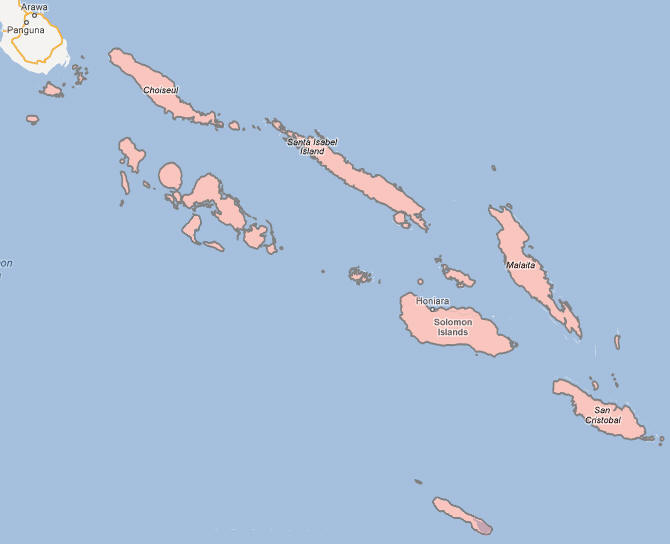Solomon Islands Facts
The Solomon Islands, state of the western Pacific, east of New Guinea; 27,556 km², 653,000 residents (2019).Solomon Islands encompasses most of the archipelago of the same name as well as Ontong Java, Rennell and Santa Cruz islands, a total of 21 larger and about 900 smaller islands. The capital is Honiara (66,200 residents, 2012) on Guadalcanal.

Country facts
- Solomon Islands / Solomon Islands
- Country abbreviation: SB
- Area: 27 556 km²
- Population (2019): 653,000 residents
- Capital: Honiara
- Main language: English
- State: Monarchy
- Head of State: Elizabeth II (Queen)
- Head of Government: Rick Houenipwela
- Per capita GDP (2018): US $ 2,163
- GNI per capita (2018): US $ 2,000
- Monetary Unit: Salomon 1 dollar = 100 cents
- Currency code: SBD
- Country Number (Telephony): 677
- Internet domain name: sb
- Time difference compared to Sweden: +10
- National Day: July 7 (Independence Day, 1978)
Nature
- Land use: forest (88%), agricultural land (2%), other (10%)
- Highest mountain: Makarakomburu (2,447 m asl)
Population
- Population density (2019): 24 residents per km²
- Natural population growth (2019): 2.5%; birth number 30 ‰, death number 5 ‰
- Age structure (2019): 0-14 years (40%), 15-64 (56%), 65- (4%)
- Average life expectancy (2019): men 67 years, women 74 years
- Infant mortality (2019): 19 per 1,000 live births
- Population forecast 2050: 1 million residents
- HDI (2017): 0.546 (place 152 of 189)
- Urbanization rate (2019): 24%
- Most populous city (2012): Honiara (66,200 residents)
Business
- Industry’s contribution to GDP (2017: agriculture (34%), industry 8%), service (58%)
- Exports (2017): US $ 469 million
- Main export products: timber, fish
- Main exporting countries: China, Italy
- Imports (2017): US $ 462 million
- Main import products: food, machinery, fuel
- Main importing countries: China, Australia, Singapore
- Railway network: nothing in operation
The Solomon Islands form part of a larger volcanic arch extending from the east of New Guinea to Vanuatu. The islands are usually mountainous and uneven with volcanic craters, lavor and toughness. Earthquakes are common. Many of the islands have wide coastal plains; Coral reefs are found along most of the islands. The country has a tropical rainforest climate. Temperature, humidity and rainfall do not vary much during the year.
The Solomon Islands has been an independent state and member of the Commonwealth since 1978. The British Regent is Head of State and is represented by a Governor General. Parliament is elected for four years.
Most households are still self-sustaining. In the 1960s, the Kopra area was the only export commodity, but since then the business sector has expanded and now the forest industry, fishing and tourism account for most of the income. The Solomon Islands were characterized by ethnic contradictions during the late 1990s. The situation in the islands has continued to be unstable and insecure, with violence and corruption. In recent years, export revenues have fallen by 80% as a result of the decline in industries such as forestry, fishing, mining and agriculture. In 2010, the island of Rendova was hit by an earthquake and a minor tsunami.
Solomon Islands Map














































